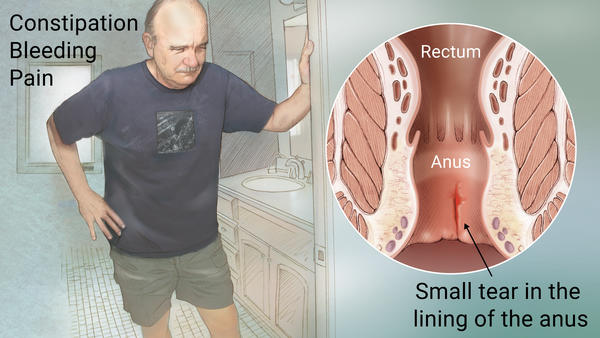
An anal fissure is a tear in the lining of the lower rectum (anal canal) that causes pain during bowel movements. Anal fissures don’t lead to more serious problems. Most anal fissures heal with home treatment after a few days or weeks. These are called short-term (acute) anal fissures. If you have an anal fissure that hasn’t healed after 8 to 12 weeks, it is considered a long-term (chronic) fissure. A chronic fissure may need medical treatment. Anal fissures are a common problem. They affect people of all ages, especially young and otherwise healthy people.
Anal fissures are caused by injury or trauma to the anal canal. Injury can happen when
Fissures can also be caused by a rectal exam, anal intercourse, or a foreign object. In some cases, a fissure may be caused by Crohn’s disease. Many experts believe that extra tension in the two muscular rings (sphincters) controlling the anus may be a cause of fissures. The outer anal sphincter is under your conscious control. But the inner sphincter is not. This muscle is under pressure, or tension, all of the time. If the pressure increases too much, it can cause spasm and reduce blood flow to the anus, leading to a fissure. This pressure can also keep a fissure from healing.
You may have:
In rare cases, an examination may be done under anaesthesia. The doctor may also ask for an ultrasound, a CT scan or an MRI.